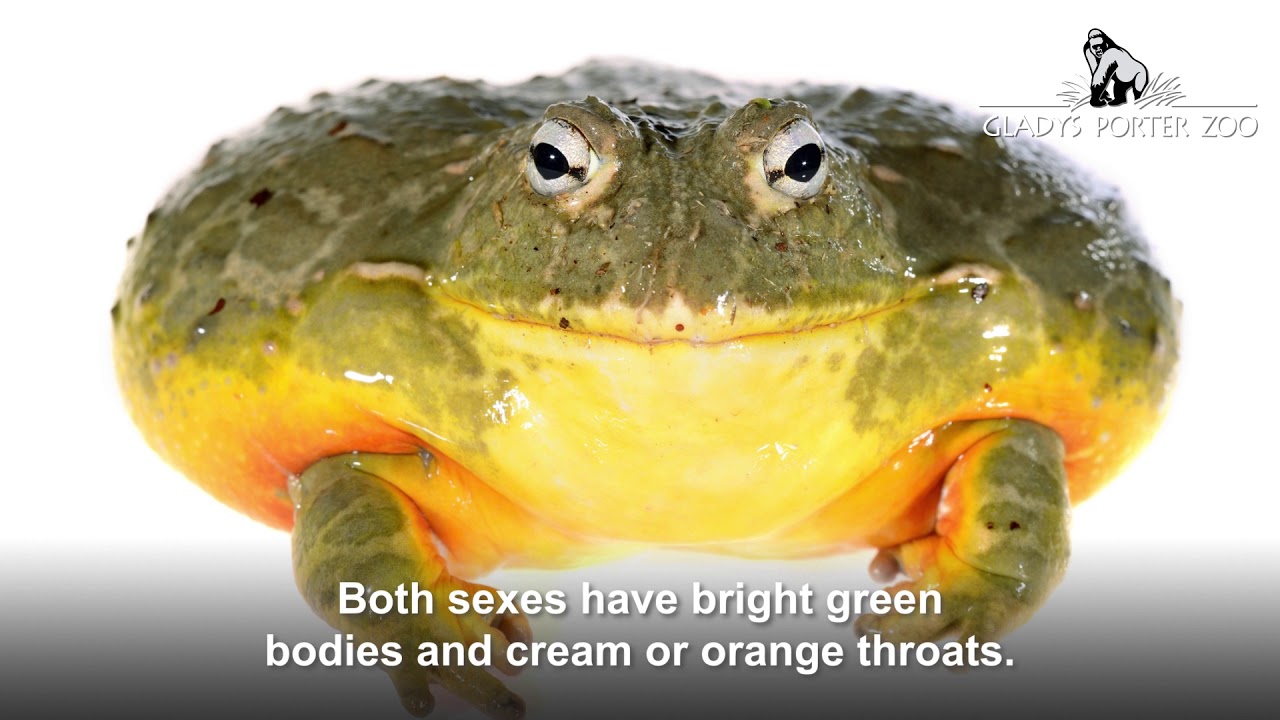- Understanding the African bullfrog’s biology and habitat
- Examining the diet and reproductive behavior of the species
- Exploring the conservation status and threats facing African bullfrogs
- Assessing the management of African bullfrogs in zoos
- Discussing the video description and its significance in understanding the species
The African bullfrog, known scientifically as Pyxicephalus adspersus, is one of the largest amphibians on the continent. This species is a formidable presence in its ecosystem, owing to its size, strength, and distinctive features. Found predominantly in sub-Saharan Africa, the African bullfrog thrives in a variety of habitats, ranging from dry savannas to wetlands, where rainfall dictates its activity patterns.
The biology of the African bullfrog is intriguing. It can grow up to nine inches in length, with males significantly larger than females. Its robust body and powerful limbs are adapted for both terrestrial and aquatic environments. One of the most distinguishing features is the large mouth equipped with rows of small teeth and two fang-like teeth in the lower jaw. These adaptations are crucial for its predatory lifestyle.
African bullfrogs have evolved to survive the harsh dry seasons of Africa by entering a dormant state known as estivation. During this period, they bury themselves underground, reducing their metabolic rate to conserve energy until the rains return. This ability to withstand extended periods without water is not only a fascinating biological process but also a critical survival strategy.
The diet of African bullfrogs is versatile and opportunistic. They are carnivorous, feeding on a wide variety of prey, including insects, small mammals, birds, and even other frogs. The strikingly large mouth allows them to consume prey as large as themselves. Hunting primarily by ambush, they rely on their lightning-fast tongues to capture unsuspecting prey. This adaptability in diet has been key to their success as a species.
Reproduction in African bullfrogs is equally impressive. Breeding occurs during the rainy season when males congregate in temporary pools to attract females through loud calls. The competition can be fierce, with males resorting to physical confrontations to secure mating opportunities. Females lay thousands of eggs in shallow waters, which hatch into tadpoles within days. The father often guards the young, exhibiting a degree of parental care unusual in amphibians.
Despite their ability to thrive in diverse environments, African bullfrogs face several threats. Habitat destruction due to agriculture and urbanization is a significant challenge, reducing available breeding and estivation sites. Additionally, climate change poses a risk by altering rainfall patterns, potentially affecting their breeding cycles. Overcollection for the pet trade and use in traditional medicine further threaten wild populations.
The conservation status of African bullfrogs is currently classified as ‘Least Concern’ by the International Union for Conservation of Nature (IUCN). However, local population declines highlight the need for monitoring and conservation actions. Efforts should focus on habitat preservation, sustainable land use practices, and regulating trade to prevent overexploitation.
In zoos, African bullfrogs are part of educational programs that showcase their unique adaptations and ecological roles. Zoological institutions play a crucial role in raising awareness about the species and its conservation needs. Proper husbandry is essential for maintaining healthy individuals in captivity. Factors such as adequate space, substrate for burrowing, and appropriate humidity levels must be provided. A diverse diet that mimics natural feeding patterns is also crucial for their well-being.
The video description associated with African bullfrogs offers valuable insights into their behavior and ecological interactions. Footage showcasing the bullfrog’s feeding habits, mating rituals, and estivation techniques can educate and engage the public, fostering a deeper appreciation for this remarkable species. Visual representations also aid in scientific research, providing data on behavior patterns and habitat use that is crucial for effective conservation management.
Understanding the African bullfrog’s habitat, diet, reproductive behavior, conservation status, and care in captivity provides a comprehensive picture of this species. By examining the descriptions and visual documentation, we can appreciate the intricate balance of adaptations that enable the African bullfrog to thrive in its natural environment. Such knowledge is instrumental in fostering conservation efforts that protect not only the African bullfrog but also the ecosystems it inhabits.
*****
Source Description
Did you know that April is National Frog Month? We’ll be highlighting a different species of frog every week, starting with the largest frog we have here, the African bullfrog.


